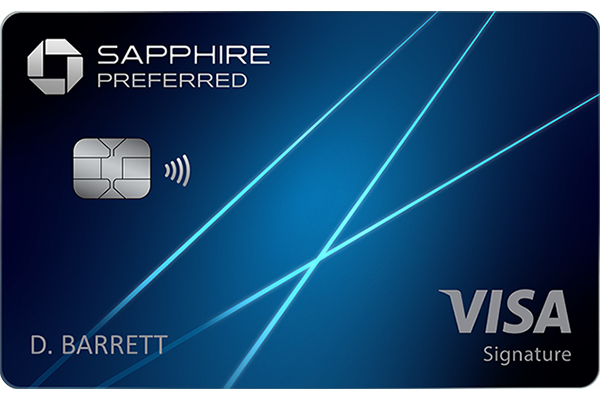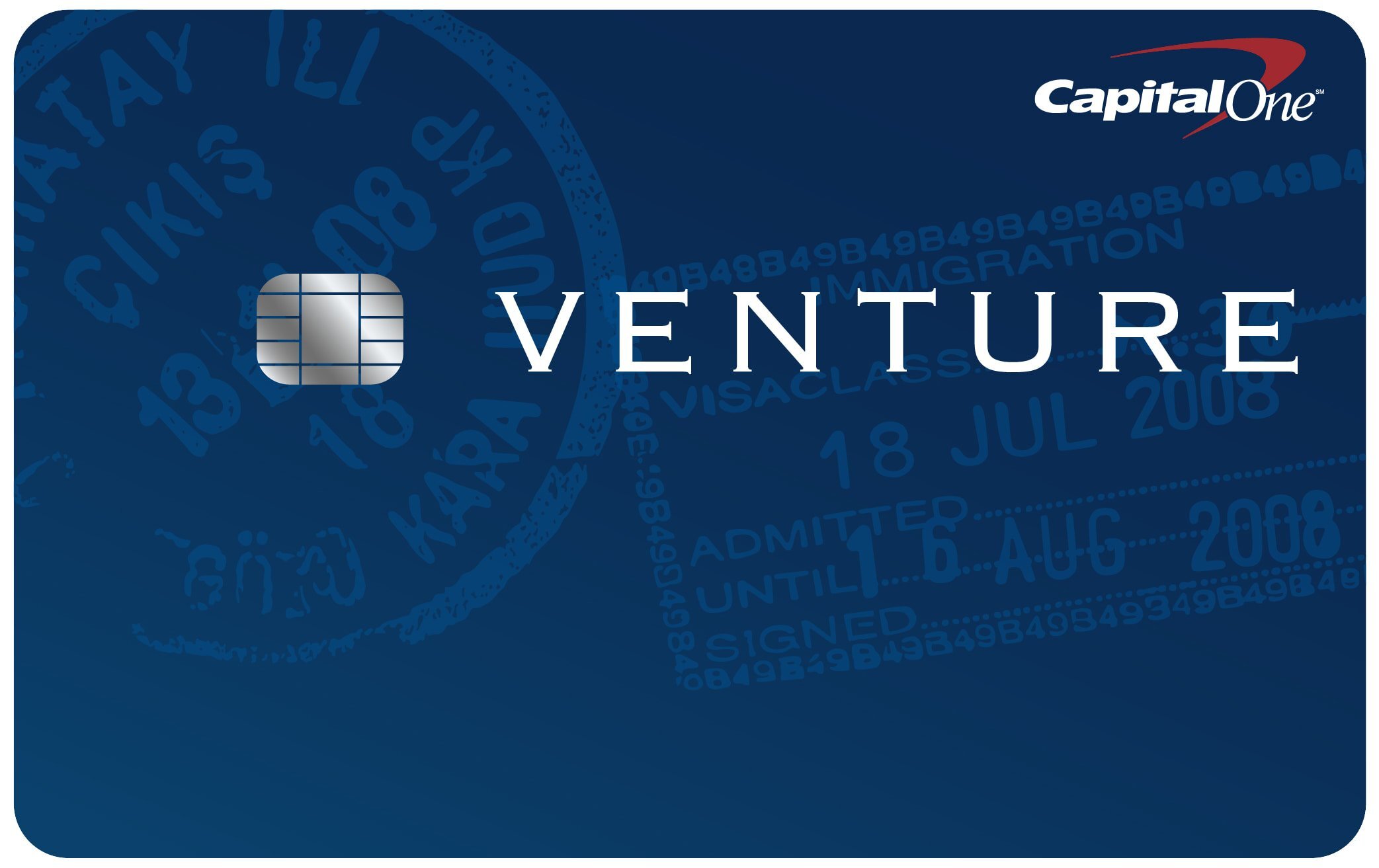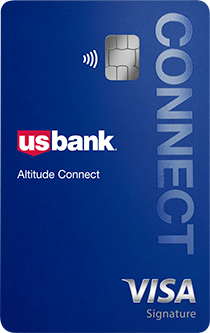How To Travel to Europe for Free Next Year
Chamonix, France
The burning desire to experience the world’s majestic beauty drives me to be active outside, every single day. This same urge has driven me to travel extensively across North America and around the world. While the United States offers some of the most majestic landscapes imaginable, I can't help my longing to experience the grandeur of the Alps' glaciated peaks, the ruggedness of the Pyrenees, the windswept landscape of Scotland, the deep, dark fjords of Norway, the rain forests of Tasmania, the world's tallest peaks in Nepal, and so much more.
I've been writing about European travel since 2015, and sometimes, these articles fail to resonate with a North American audience. "Oh, that's nice that you're so well-off that you can afford these expensive trips, but get a grip: normal people with normal jobs can't afford such extravagant vacations," the common response goes.
News flash: I'm a professional writer—nothing about my profession means that I’m threatening to break into the ranks of the upper crust elite, but even still, I manage to travel the world on my own time for cheap or even free. In this article, I share the tools and tactics that I've used to travel to Norway, the Bahamas, Hawaii, and beyond for free. By following these steps, you'll be able to earn a free trip to Europe (or anywhere else in the world) next year.
Requirements
The strategies discussed in this article aren't for everyone. Here are a few requirements that you must meet for these strategies to work for you:
You need to have a decent credit score. It doesn't need to be a perfect 800+, but somewhere in the 700s is required.
You cannot have any credit card debt. If you have credit card debt or routinely carry a balance on your credit card, eliminating the absurd amount of money that you pay in credit card interest by paying off your debt would in and of itself fund a free trip to Europe. Step 0: Pay off your credit cards before proceeding any further.
You need to be comfortable—or become comfortable—using and managing credit cards in such a way that you pay your balances in full every single month. I've met people who refuse to even open a credit card due to a profound fear of any sort of debt... unfortunately, they won't be able to travel to Europe for free with this strategy.
How To Travel for Free
Czech Republic
It will take some planning and preparation in order to score your free trip to Europe next year. This article is written with the assumption that you have about a year to plan and prepare for your trip to Europe. Even if you don't have that much time, these strategies and concepts can be used on an ongoing basis to earn you free or cheap travel every year for the rest of your life.
To score your free trip, we're going to make use of travel rewards and sign-up bonuses offered by credit card companies. Taken together, this strategy is known as "Travel Hacking." Despite the name, none of the strategies shared in this article are illegal, or even secret. Travelers have been writing about these tactics for years. Do a quick Google search to confirm this independently, or check out some of these resources (including entire websites) dedicated to Travel Hacking:
Despite so much information floating around the internet about these tools and tactics, I know very few people in my personal life that take advantage of these opportunities. Perhaps there's so much information out there that it can feel overwhelming. You can definitely take this strategy to the Nth degree and try to optimize the shit out of every possible flight reward, or you can do an 80/20 analysis and get the vast majority of the benefits out of travel hacking for a fraction of the work.
This article will give you my preferred quick-and-dirty method that will allow you to earn a free European trip without worrying about the unnecessary finer details.
How Travel Hacking and Sign-Up Bonuses Work
Before we get into the step-by-step guide, here's the high-level overview of how travel hacking and credit card sign-up bonuses work.
When you use a credit card to pay for your expenses, the credit card company charges the merchant a fee to process the transaction. The best credit card companies use a portion of this fee to reward you, the consumer, to encourage you to use their credit card. These rewards can take several forms, including cashback, rewards points of various types, and airline miles. Then, these various points, miles, and cashback can be redeemed for things that you actually want or need, like a flight to Europe.
Unfortunately, most credit card reward rates range from 1% to 2% of the purchase value, so that in and of itself won't get you anywhere fast. But many credit cards offer an incentive to entice you to sign up for their credit card, and not a competitor's. These incentives are known as sign-up bonuses.
Sign-Up Bonuses Explained
Here's how most sign-up bonuses work: when you sign up for a new credit card, the company will offer you a sign-up bonus that says something like, "Earn 75,000 miles when you spend $3,000 in the first 3 months!"
Now, $3,000 might sound like a lot of money if you're thinking about spending an extra $3,000 above and beyond your normal monthly expenses to get this bonus. But the most important part of my strategy is that I don't increase my spending at all to earn these sign-up bonuses. Instead, I use my normal monthly expenses to reach that $3,000 threshold.
I put literally any expense that can possibly be charged to a credit card, on my credit card(s). If you've never done this before, you might be surprised by all the transactions that can be charged to a credit card. These include basic everyday expenses that you might already put on a credit card, like:
Groceries
Gasoline
Eating out
Retail spending
Etc.
But you can also charge major recurring monthly expenses to your credit card, such as:
Health insurance premiums
Utility bills, like electricity and natural gas
Cell phone bills
Internet and/or cable bill
Car insurance
Renter's insurance
Certain types of rent, like storage units
When you add all these major line items together, how much are you spending each month? I can almost guarantee that it's more than the $1,000 per month required to reach the minimum spend amount for most of these credit cards.
The only expenses that can't effectively be charged to a credit card are:
Mortgage
Payment of other loans, such as an auto loan
Most rents
Certain types of insurance, like life insurance, depending on the company
If you channel every possible expense in your life onto your new credit card, you can easily reach the minimum spend amounts required for these sign-up bonuses.
Q: "Why do credit card companies offer sign-up bonuses?"
A: Because they think you can't handle making your payments on time and in full every month. And statistically, they're right: the companies offer these massive sign-up bonuses because, if you end up paying even a couple of months of credit card interest, you will erase some or all of the benefits that you earned from the sign-up bonus.
In the long run, credit card companies win because most people are suckers.
If you want this strategy to work for you, you'll have to be better than most people. If you don’t think you can handle that, you’d better quit now.
Still with me? Now on to the detailed steps.
Step 1: Sign up for your first credit card and earn your free flight.
Most travel hackers focus primarily on earning free flights because, for some reason, airlines offer some of the best credit card rewards out of any industry. They aren't the only industry to participate, but you will easily be able to earn a free round-trip flight to just about anywhere in the world… and Europe is actually a more affordable destination to reach than most. If you time it right and strategize properly, one sign-up bonus could potentially even get you two free flights to Europe.
Safe Bet: Chase Sapphire Preferred
The Chase Sapphire Preferred is widely considered to be one of the best travel rewards cards in the industry. You've probably heard of this one before. Credit card sign-up bonuses do fluctuate up and down from time to time, and during the rough draft of this article, the Chase Sapphire Preferred was offering 100,000 bonus points as a sign-up bonus after you spend $4,000 in the first 3 months—the most they've ever offered. Unfortunately, it's now back down to 60,000 points, but it's common to see this sign-up bonus reach 80,000 if you time it right properly.
How far will these 60,000 points get you? That depends on a whole host of factors, but ThePointsGuy values Chase points at 2 cents per point, so you may be able to redeem 60,000 points for up to $1,200 of travel. $1,200 is easily enough for a round-trip ticket to Europe, and if you are flexible on your travel dates, tickets often sell for half that.
Other benefits of the Chase Sapphire Preferred include great travel insurance, 2x points on travel purchases, and more points on select categories. The Chase Ultimate Rewards booking portal is also quite good, and Chase has some of the best airline transfer partners in the industry.
Quick Hits:
60,000-point sign-up bonus
$4,000 spend in the first 3 months
2x points on travel, 3x (or more) on other categories, 1x on all purchases
Great booking portal and airline transfers
$95 annual fee
Pro Level Tactics
For each of these tactics, I have identified a "safe bet" card that will help you easily earn a free trip to Europe next year, but if you want to start planning and strategizing how you can earn free trips multiple years in a row, I have identified a few pro-level cards and strategies that you can implement to do just that.
I'm trying to keep this article short and to the point, though. If you want the lengthy document with the pro-level details, subscribe to my email list and I'll drop those deets in your inbox!
Step 2: Earn your free lodging.
Your lodging might not be quite this nice… but at least you’ll be able to tour castles like this one! Photo taken in Belgium.
Lodging is a critical component of the travel game. Expensive lodging can make or break an entire trip's budget.
Every traveler has their favorite lodging strategy, but usually, my first and last stop to book lodging anywhere in the world is AirBNB. I love staying in AirBNBs! It helps me feel like a local when I travel, as I get to experience unique apartments and houses all around the world. In many cases, it's actually cheaper than staying in a hotel. I also find staying in an apartment to be much more comfortable, with all of the comforts of home like a living room, dining room, workspace, kitchen, and much more.
In fact, using the kitchen in my AirBNB is probably my single biggest travel hack for keeping costs down. Going out to eat at restaurants can cost an astronomical amount of money, especially if you're going out for every single meal. When I'm on long trips, I don't actually go out to eat that much... instead, I live like a local, buy food at the grocery store, and prepare it at home. Even if I decide I want to go out to eat for most of the evening meals to enjoy the local cuisine, having a kitchen to make and prep breakfasts and lunches alone dramatically reduces the cost of food and travel.
Safe Bet: Capital One Venture Rewards
Unfortunately, there isn't a great credit card option to score AirBNB rewards, but Capital One (along with a few other companies) offers a feature called the "Expense Eraser." Basically, once you earn your sign-up bonus and wrack up the miles, you can use these miles to "erase" any travel-related expense on your credit card statement. So, earn the miles, book the AirBNB, and then when the expense hits your credit card, "erase" it with those miles.
This 60,000-mile sign-up bonus plus at least 6,000 points earned during the initial spend phase will only be worth $660 in value through the expense eraser, which may or may not be enough for your entire AirBNB stay, depending on the location and duration of stay. If it doesn't cover the entire cost, consider using some of the value earned from the card below, using the Venture Rewards card for longer to earn more miles, or using this card to book your flight and the 60,000-point bonus of the Chase Sapphire Preferred for your lodging. There's a lot of ways to play this.
Quick Hits:
60,000-mile sign-up bonus
$3,000 spend in the first 3 months
2x miles earned on all purchases
$95 annual fee
Pro Level...
There are a few pro-level options here too! Again, sign up for my email list to get the pro deets.
Step 3: Cover your additional expenses.
Let's be honest: you'll encounter at least a few unexpected expenses on every trip. To help cover those unexpected expenses, or to cover the cost of food, eating out, etc., open at least one more credit card to score some additional rewards. While there are tons of credit cards to choose from, I've been particularly impressed with the US Bank Altitude Connect.
Safe Bet: US Bank Altitude Connect
This credit card is currently offering a 50,000-point sign-up bonus that's worth about $500. But on top of that, I think the day-to-day rewards offered on this card are incredible. I first signed up for the Altitude Connect as a way to optimize my gas purchases: it offers a whopping 4x bonus points on gas stations and travel. That's double what you'll get on the other cards mentioned here. For other expenses, the Altitude Connect offers 2x points on grocery stores and dining and 1x points on all other categories.
Quick Hits:
50,000-point sign-up bonus
$3,000 spend in the first 3 months
4x points on gas and travel, and 2x points on groceries and dining
$0 the first year, $95 annual fee after that
Pro Level and Alternates...
There are tons of options here. Subscribe for more deets!
Step 4: Decide where you want to go.
Bergen, Norway
While we've already identified that you probably want to go to Europe and see the majestic beauty of the Alps for yourself, the world is your oyster. While flights to places like New Zealand are much more expensive and require more miles to get there, you can definitely earn those miles if you try.
Why is this listed as Step 4 instead of Step 1?
Because with the strategy outlined above, it doesn't really matter where you end up going. Instead, the most important part is that you start planning ahead and earning the points well before you plan to travel. If you truly want to travel for free and cover your flight, lodging, food, and other expenses, you'll need to churn through three (or more) credit cards in advance of your trip. But once you've earned the points, you can use them wherever you'd like!
Personally, I currently have about 150,000 miles and $1,200 cashback that I've wracked up over the past few months, just waiting for my next trip. I'm not in a rush to spend it all in one place. Instead, it's just nice to know that it's there waiting for me. When the opportunity arises (read: when COVID restrictions are relaxed enough) to book my next big international trip, whether that's to Europe or South America or New Zealand, I know that I don't have to worry about paying for it or budgeting for it. When the time is right, I can just book it and go!
Step 5: Book your flight and lodging.
The actual step of booking your flight and lodging can become not only the pro-level of travel hacking, but the hyper-ultra-pro-optimizer-level of travel hacking. Here's the point where I think the 80/20 analysis comes into play. Sure, you can try to hack the system every which way to get the highest redemption per point possible, but you can also use a few basic tactics and get the vast majority of the value with a fraction of the effort.
For your flight...
Use tools like Kayak.com and GoogleFlights to explore multiple destinations and see which airports offer the cheapest flights. Sometimes, it's cheaper to fly to a different airport in a different country, rent a car, and drive an hour, than it is to fly into a place like Switzerland.
Use those same tools to analyze the cost of flights on different days and at different times of the year. For instance, July and August are two of the most expensive months to travel to Europe, as well as the Christmas and New Year's holidays. It’s almost always more expensive to fly on the weekend than it is during the week. Consequently, I often end up traveling to Europe in the fall and flying on Tuesdays. With these two tweaks, I usually score flights at one-half or one-quarter of the price of peak season tickets! The further you can stretch your miles and points, the more free traveling you can do.
For your lodging...
I like to check the availability and cost of lodging in my chosen destination at the same time that I'm researching tickets. I want to ensure that there's satisfactory lodging available before I book my flight.
If I find a good AirBNB or hotel, I usually book my airline ticket first to lock in my arrival and departure dates and then build my lodging itinerary from there. Especially when traveling to Europe, I like to book all of my lodging in advance, so I don't have to worry about rooms getting booked or prices going up. This lodging strategy works great for 1-4 week trips, but if you're traveling for several months, that's a different story.
As mentioned above, my one-stop shop is usually AirBNB for my primary accommodation. Then, I'll often supplement my main AirBNB stay in my chosen destination with a night or two at an airport hotel on either end, if needed, to make the itinerary easier.
Step 6: Travel!
Mont Blanc Massif viewed from Mont Fort, Verbier, Switzerland
This one seems obvious, but I'm constantly amazed at the number of people I know who'll spend months planning an epic vacation, only to pull the plug at the last minute, citing things like work stress, family obligations, too much cost, etc.
For this strategy to work, at some point, you're going to have to pull the plug and actually travel.
Even after all this planning, will there still be unknowns? Of course.
Will something go wrong on your trip? Most definitely.
What if there's an unexpected expense? You can bet something will come up, whether big or small (hopefully it's small).
One of the most enriching and rewarding things about travel is how it forces you to confront the unknown and figure out how to deal with problems when you're outside of your comfort zone. After dealing with unexpected obstacles and unknown travel problems time and time again, and realizing that you always come out the other side relatively unscathed, you'll gain confidence in yourself and realize that yes, you can travel the world. Even in your day-to-day life, you'll gain confidence that even though a challenge may seem scary and unknowable, that you'll figure out a way to deal with it.
All you have to do is take that initial leap.
Step 7: Clean-Up Phase
The first two credit cards mentioned here have an annual fee of $95, and the third one waives the fee the first year but charges the $95 fee the second year. While waiving the annual fee for the first year and only assessing it beginning year 2 used to be commonplace for most credit card companies, that trend seems to be declining... probably due to people like us who are taking advantage of the sign-up bonuses. Even so, with the strategy above, you'll come out thousands of dollars ahead despite paying two $95 annual fees.
But do you want to keep paying these fees year after year?
In some cases, you might decide that it's worth it to keep a credit card in your wallet and keep paying the annual fee. All three of the credit cards mentioned here are top-notch travel cards, each with slightly different benefits and perks. The Chase Sapphire Preferred is a perennial favorite and might deserve a spot in your wallet long-term. I personally think the 4% back on gas and travel offered by the US Altitude Connect is one of the best in the industry right now. But does the Capital One Venture Rewards stay in your wallet, too? That's up to you.
I personally recommend keeping at least one high-quality travel card on hand at all times. While I didn't dive into these benefits in detail above, none of these three cards charge any foreign transaction fees, and each of them offers some sort of travel insurance. These benefits are common across all major travel cards, but they aren't offered on most standard bank credit cards. These benefits alone are worth more than a $95 annual fee.
If you don't see yourself needing a card long-term, you can simply earn the points, use the points, and then close it. Closing a card is the most time-consuming part of the entire process because it usually requires a call to the credit card company. Even so, you can usually have the card closed within 5-10 minutes.
Common Question: Will this Negatively Impact my Credit Score?
Opening and closing multiple credit cards can have a short-term impact on your credit score, but it will have a negligible long-term impact. In fact, opening more credit cards and increasing your total available credit will decrease your credit utilization—one of the top factors used to calculate your score—which can actually increase your credit rating long-term. However, having more new accounts open will decrease your average credit age—another one of the top-line factors—and decrease your credit score.
The general rule of thumb is that if you're thinking about opening a new mortgage (or possibly an auto loan) in the near future, then you should probably abstain from churning credit cards for the time being. You have bigger fish to fry.
For everyone else, though, as long as you pay your balance in full every month, you have very little to worry about. I've been using these (and other) credit card tactics to travel the world for the past 6 years and have maintained a credit rating just shy of 800.
Konigstein Fortress, Germany
Quick Summary
Despite my attempts to make this a quick-and-dirty guide to travel hacking, this article still ended up being way too long. If you want even more details, including card recommendations to cover three years of free European travel, be sure to sign up for the email list to get the pro-level strategies. But for the true quick-and-dirty version, here's a quick summary:
Rule #1: above all else, pay your credit card balances in full every month.
Earn credit card sign-up bonuses on travel rewards cards so you can travel for free.
To meet the minimum spend amounts, funnel every possible expense onto your new credit card. Don't spend any extra than you normally would.
Open the first credit card to earn a flight.
Open a second credit card to cover lodging.
Open a third credit card to cover additional expenses, such as food.
Redeem those points to book your travel.
Pack your bags and take to the sky! Europe awaits!
Cancel any credit cards that you don't want to keep.
Where are you going to travel with your newfound freedom?
Get the Pro-Level Guide to Free Travel
If you want my pro-level guide to travel hacking, with more credit card recommendations and tips to earn free trips for multiple years in a row, just subscribe to my email list and I’ll drop the full guide in your inbox!
Is a one-off trip just not enticing enough for you? Well then, be sure to read my follow-up article, outlining how I score a free two-week international vacation… every single year!
DISCLAIMER
This article is for informational purposes only. Any financial tools mentioned in this article are not recommendations but rather examples of options available to you. Do your research before opening one of these financial tools. Gregory Heil and Singletrack Media, LLC, cannot be held liable for any actions taken as a result of this article.









